
Today we’re back with another look at math word problems. If you’ve been here a while you might have noticed that math word problems keep popping up on here on the blog. We’ve talked about them a few times because, truth talk incoming, they can be a drag. Math word problems can be incredibly tricky for our young mathematicians, who often have so many questions: “What’s happening in the problem? How am I supposed to solve it? There are too many numbers… There are too few numbers… She bought how many watermelons?!” You get the point.
So today, we’re going to touch on another way to help kids build up those math word problem-solving skills: writing their own!
But Why Math Word Problems Anyway?
When used thoughtfully and authentically, math word problems can provide a representation of real-life situations. I’m talking about problems that are realistic and that people might actually encounter. Here’s an example of a problem like that:
Ms. Starr’s class of 21 students was out at recess. She blew the whistle to go back inside. 15 students lined up. How many more students still need to line up?
I’d bet that situation has happened for most of us – just waiting for those last six kids who are dragging their feet (figuratively and literally!) to go inside.
Math word problems like our example above also help students build their creative thinking and problem-solving skills while they practice other computation skills. Students often solve math word problems such as this one in different ways. When we take things a step further and have students share their methods with peers, this allows them to learn from one another, building their bank of problem-solving skills.
Even better: students need to use other math concepts to accurately answer the questions. As a result, math word problems are like the full body workout of math – they hit so many muscles!
Let’s look at this example:
Aubrey is playing with her toy cars and wants to line them up for a race. She wants all 18 toy cars to be lined up in three lanes so that each race will have exactly three cars racing. How many races will Aubrey have?
To solve this problem, students need to be able to visualize what’s happening, understand what is being asked, interpret the numbers in the story, determine what math concept is being described, and solve the problem. The problem is not just about solving the word problem but also about understanding multiplication and division as arrays and understanding division as related to multiplication.
Math Word problems can be a powerful learning tool that we want students to master. Asking kids to write their own is one way to do that. Before we dive in, let’s take a look at why just learning to solve math word problems isn’t as powerful as when it’s paired with writing math word problems.
“Just” Solving
As I mentioned earlier, “just” solving math word problems involves students understanding the problem, choosing an operation, and solving it. Kids need to have some understanding of the four operations, but since there are only 4 options, it’s easy to just pick one, pluck some numbers and solve.
We’ve all come across those students who skim a word problem, pick some numbers, and do something with them. They didn’t take the time to understand the problem and therefore, can’t tell if their answer is reasonable. Eek! We definitely do not want number pluckers!
The Magic of Writing Math Word Problems
Of course, we’ve also all come across students who think deeply, understand what they are doing, and can even teach it to a peer. As teachers, we want all of our students to reach this level of proficiency. One tried and true strategy to accomplish this? You guessed it! Writing math word problems.
Deepening Understanding
To write their own math word problems, students need a deeper understanding of the operation they are writing a problem for. For addition or subtraction, they need to understand that addition and subtraction situations can be putting together, changing, or comparing situations. If they are writing a multiplication or division word problem, they need to understand those operations as arrays, area, or equal groups.
These understandings themselves are hard work even when only solving math word problems. Students need to take the time to visualize the situation and understand what is happening. While we don’t need them to be able to name the type of word problem situation, understanding whether something is changing or being compared helps students approach solving the problem with a solid understanding of the situation.
Creating their own problems that represent these various situations is a great way to deepen students’ understanding of a myriad of problem types. Being able to create something using your own understanding requires higher-order thinking. Having students create can improve their ability to recognize different problem types later on.
Increased Engagement
Having students write their own math word problems can significantly increase student engagement. Students LOVE to see their names in math word problems. Let me tell you, the smile on those little faces when they hear their name in teacher-made problems lights up the room!
To take that one step further, don’t just use their names. Use their actual problems! Using the problems that students write in lessons makes math much more personalized. Kids get such a kick out of seeing their own problems practiced ‘live’. Bonus: they also love to hear what their peers have written.
How To Get Started with Writing Math Word Problems
Wondering how to incorporate this into your already jam-packed math block? Great news: it’s not as hard as it might seem. This doesn’t need to be a full lesson every single time. Instead, I like for it to be a math routine that kids do with some regularity.
I like to use math journals for various purposes: responding to prompts, including reference sheets or notes, and showing math thinking. Writing math word problems fits right into this work.
Here’s how it might work:
- Introduce & practice the writing word problem routine: Explain exactly what you expect of students when they write their own problems. Our routine included writing the date so we could see growth over time. I also told students that their word problem should be related to what we are learning in class so that any of their peers could solve it and that the problem should include a question at the end that can be answered using the information given in the problem. After writing the problem, students can also create an “answer key” that shows how they would solve the problem and the correct answer. During this introductory lesson, give students a chance to practice and receive feedback.
- Get the routine going: Once students have had a chance to practice the routine, writing math word problems is a perfect warm-up activity. Students can write a word problem that directly connects to the content of the day.
- Review and use the problems: Now that you’ve got a treasure trove of math word problems – use them! You can easily incorporate student-created math word problems into lessons, leaving the author as the celebrity of the day. By having students write problems that directly relate to current content, they are easy to include. You can work these into independent practice, as a problem to solve as a group during a lesson, or even in homework.
One last disclaimer: don’t let the writing part of this routine hold you back! Let kids use speech to text, record their voices, or dictate their problems. Phonetic spelling is great too! It’s the thinking that is involved in creating math word problems that is the most important. Let the actual writing part take a backseat.
Have you tried having kids write their own math word problems? Have you made it a routine in your classroom? I’d love to hear from you about how you make this work and what results you’ve seen!

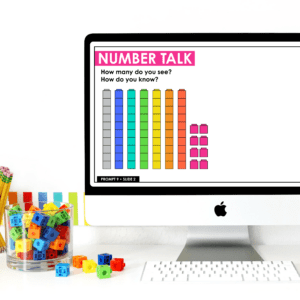
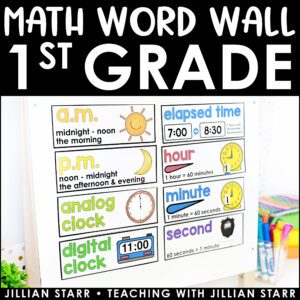
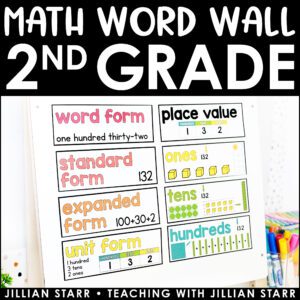
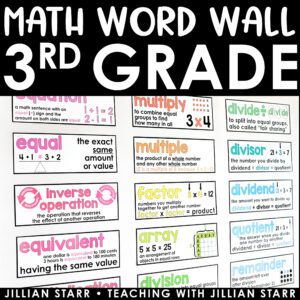
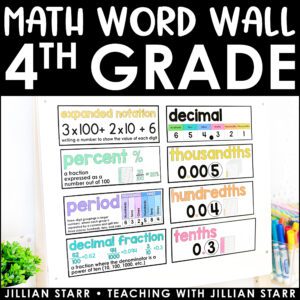

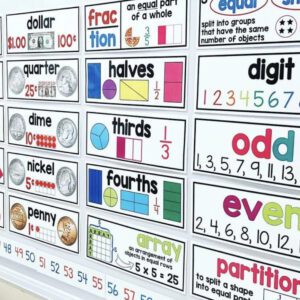



I absolutely love the way this is explained.
Teaching the concept with context and using the correct manipulative.
I cannot wait to do this with my students.
Thank you
I have used this technique for many years. It’s an excellent assessment tool! Your ideas are wonderful, thanks!